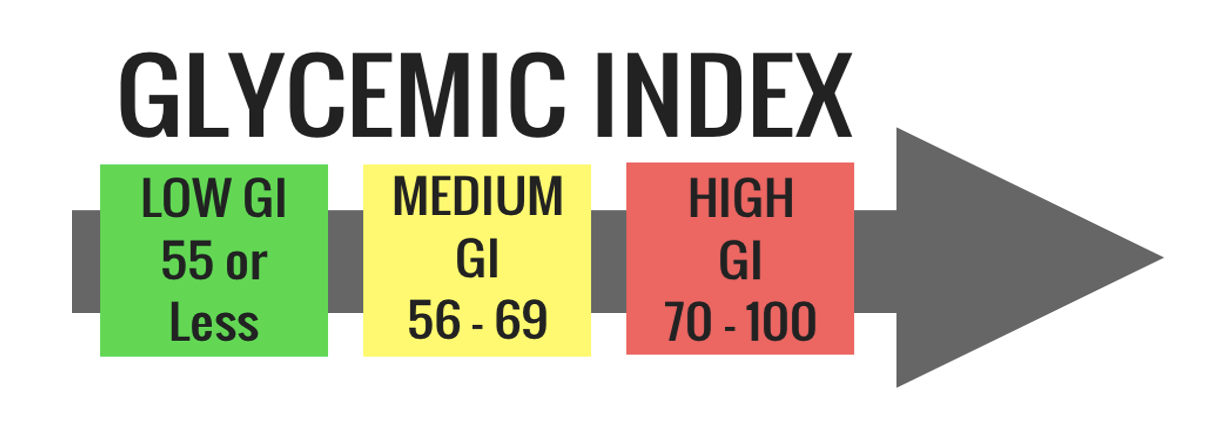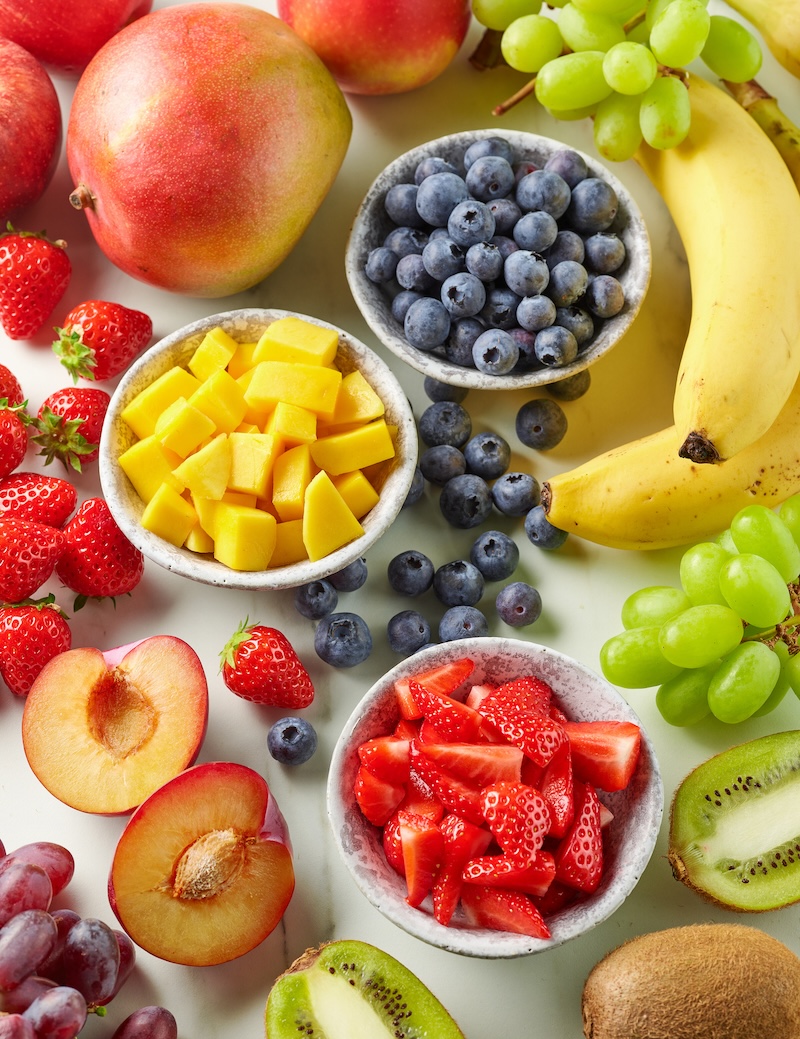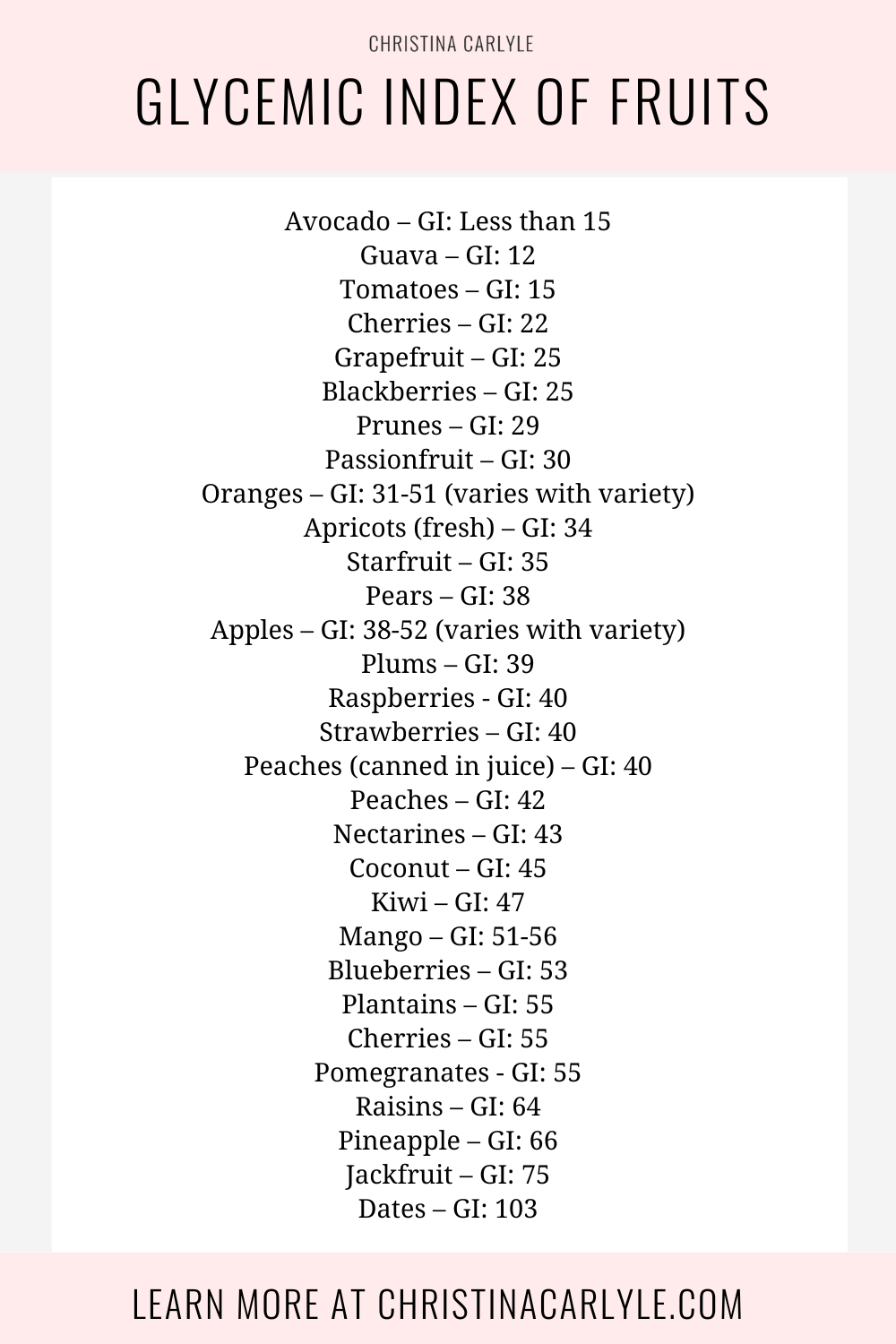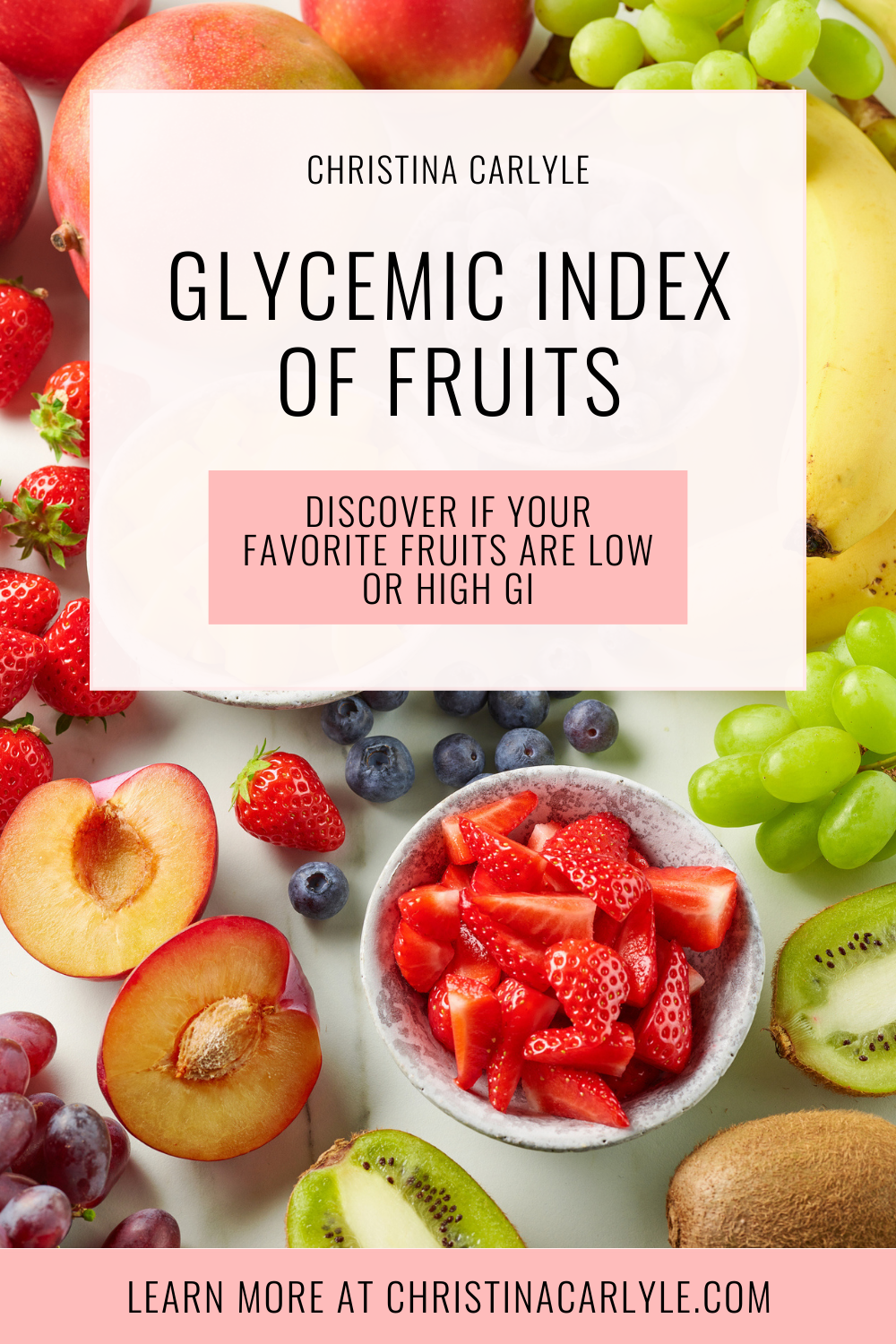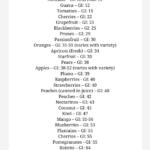Last Updated on April 26, 2024
I’m doing a deep dive on low glycemic fruits including sharing a list of the most popular fruits and their rank on the glycemic index and their benefits.
First things first, what the heck does low glycemic mean?
The Glycemic Index is a measure used to determine how much a food can impact blood sugar levels.
The glycemic index ranks foods from 0-100. The lower the score the better it is. The higher the score, the more you should limit intake. Several factors affect the glycemic index of a food, including the nutrient composition, ripeness, cooking method, and amount of processing it has undergone.
Studies have found that high GI foods can cause people to eat up to 60 – 70% more calories than they normally would, following a crash.
This is why sugar, even ‘healthy sugars’ like the fructose found in fruit are so addictive. Sugar literally re-programs your hormones, can cause cravings for more sugar, and triggers your body to store the sugar as fat.
That means healthy fruits that rank high on the glycemic index and can affect your hormones and blood sugar. That’s why low glycemic fruits are best… especially if you want to keep your hormones balanced and are trying to lose weight.
Glycemic Index of Fruits
Please note, the GI rank of these fruits is approximate and can vary based on varietal, if the fruit is fresh/raw or dried.
- Avocado – GI: Less than 15
- Guava – GI: 12
- Tomatoes – GI: 15
- Cherries – GI: 22
- Grapefruit – GI: 25
- Blackberries – GI: 25
- Prunes – GI: 29
- Passionfruit – GI: 30
- Oranges – GI: 31-51 (varies with variety)
- Apricots (fresh) – GI: 34
- Starfruit – GI: 35
- Pears – GI: 38
- Apples – GI: 38-52 (varies with variety)
- Plums – GI: 39
- Raspberries – GI: 40
- Strawberries – GI: 40
- Peaches (canned in juice) – GI: 40
- Peaches – GI: 42
- Nectarines – GI: 43
- Coconut (fresh) – GI: 45
- Kiwi – GI: 47
- Mango – GI: 51-56
- Blueberries – GI: 53
- Plantains – GI: 55
- Cherries – GI: 55
- Pomegranates – GI: 55
- Raisins – GI: 64
- Pineapple – GI: 66
- Jackfruit – GI: 75
- Dates – GI: 103
Can Fruit be low in sugar but high on the glycemic index?
Remember, the GI of a food is influenced not only by its sugar content but also by factors such as the type of sugar it contains, its fiber content, its ripeness, how it’s processed or cooked, and its overall carbohydrate composition.
For example, watermelon is a fruit that has a relatively high glycemic index despite its low sugar content per serving. This is because watermelon contains a high amount of easily digestible carbohydrates, particularly simple sugars like fructose. Watermelon also has a low fiber content, which can further contribute to its rapid digestion and absorption, leading to a higher glycemic response.
Low Glycemic Fruit Benefits
Low glycemic fruits are great for health and fitness for lots of reasons.
Here’s why I always recommend eating them and the benefits of low glycemic fruits:
- Stable Blood Sugar Levels: Low glycemic fruits cause a gradual and steady increase in blood sugar levels, preventing spikes and crashes. This helps in maintaining stable energy levels throughout the day and reduces the risk of hypoglycemia (low blood sugar).
- Improved Satiety: Foods with lower glycemic index values are generally more filling and satisfying. They can help you feel fuller for longer periods, which may aid in weight management and reduce the tendency to overeat.
- Better Glycemic Control: For individuals with diabetes or insulin resistance, consuming low glycemic fruits can help in better glycemic control. They result in a slower increase in blood sugar levels, reducing the need for large insulin spikes to manage glucose levels.
- Reduced Risk of Chronic Diseases: Diets rich in low glycemic fruits are associated with a reduced risk of chronic diseases such as type 2 diabetes, cardiovascular disease, and certain types of cancer. Low glycemic foods often contain higher amounts of fiber, vitamins, minerals, and phytonutrients, which contribute to overall health.
- Improved Mood and Cognitive Function: Stable blood sugar levels are essential for brain health. Low glycemic fruits provide a steady supply of glucose to the brain, supporting cognitive function and mood stability.
- Sustainable Energy: Unlike high glycemic foods that provide quick bursts of energy followed by crashes, low glycemic fruits provide sustained energy over time. This can enhance endurance and performance, especially during prolonged physical activities.
- Support for Weight Management: Incorporating low glycemic fruits into the diet can be beneficial for weight management. They are less likely to contribute to excess calorie intake and may help reduce cravings for high-calorie, high-glycemic foods.
So now that you know what fruits are low and high glycemic, enjoy them accordingly.
I personally LOVE blueberries and recommend them most but it’s so hard to pick a favorite… and recommendations vary based on your unique needs, tastes, and goals.
What are your favorite low glycemic fruits? Let me know in the comments.
Your Coach & Biggest Cheerleader,
![]()
P.S. Just because a fruit is low glycemic doesn’t necessarily mean it’s good for you. Different metabolic types react differently to different sugars and fibers found in fruits. Some do better with a lot of fruit… others not so much.
When you give your metabolism the nutrients it needs you can maximize benefits and avoid issues like weight gain, GI, liver, and hormone issues, etc. My Metabolic Type Training – complete with Metabolic Type Quiz – explains more.
P.P.S. Pin this to Pinterest so you’ll have it forever.
If you liked this article you may also like:


